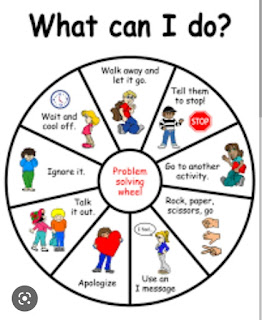1. Name the problem - If you see your child struggling with an activity, give them the language to express what they are finding difficult. Once you have named the problem, follow up with a prompting question that encourages them to take the next step to solve the problem.
For example, if a child spilled water and can't find a cloth to clean it up, you could say: ''That looks like a spill of water. What should we do next?
2. Answer with a question- when a child asks a question, resist the urge to answer immediately. Instead, think about how you could use their query to encourage them to take the next step.
For example, if a child asks: ''Where are my shoes?'' ask them: What were you doing when you were wearing them last?'' Prompting questions will encourage them to track back, problem- solve, and find the solution on their own?
Use prompting questions such as:
- What do you think about me?
- What do you think comes next?
- Which part are you finding difficult?
- Is there another way you could try that?
- Have you looked at it this way?
- Where could we find the answer?
3. Set the right level of challenge
Develop problem- solving and critical thinking skills by providing children with activities thar are challenging but not impossible. Activities should be a little out of reach and account for the child's stage of development, skill level, and interests.
For example, you would introduce a child who is interested in name writing to the developmentally appropriate language materials, as opposed to presenting a counting activity.
A task that is interesting and appropriately challenging will encourage persistence, which ultimately leads to problem- solving and critical thinking skills, as opposed to frustration and discouragement.
Here is a Video on how to promote problem solving in children.




No comments:
Post a Comment